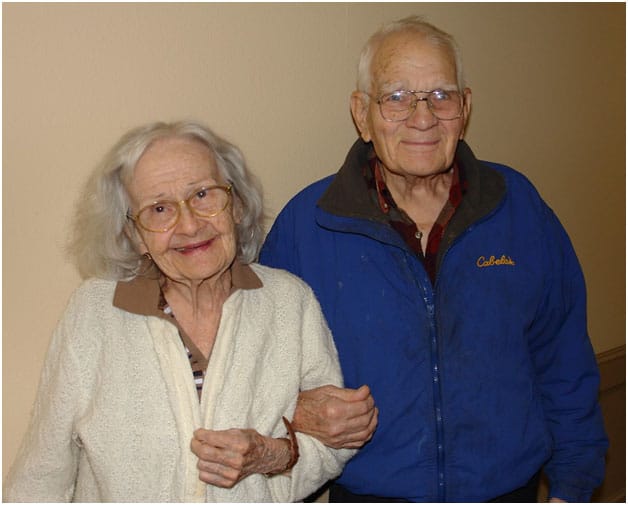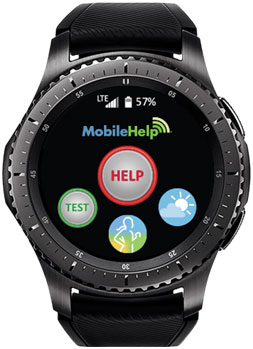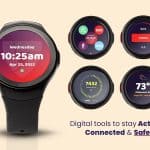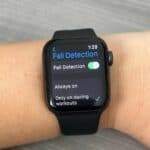
Image Credit: Ralph Zuranski / Flickr
One of the most difficult conversations a family ever has to have is how best to take care of their elderly relative after they have had an incident. This is especially true following one that causes their family to fear for their safety while they are alone in their home. Most people want to age at home and strongly resist the idea of moving into any kind of assisted living facility. However, modern technology might very well allow more people to stay at home as they age. There are many products that allow concerned family members to be alerted to their loved one’s activities, remind the senior to take their pills, or keep communication open between the senior and their family. If you are concerned about a family member, but they are still capable of taking care of themselves most of the time, they are probably able to remain in their own home with the help of some new technology.
Safety Devices
 If your loved one needs a better safety net than a basic medical alert system provides, you can find systems with additional helpful features. Some options might include activity monitors, which would allow family members to check up on their relatives to make sure they are eating, taking their pills, and getting around okay. They come with sensors that can be placed on the bed, doorways, the fridge, or anything else that the your senior uses on a daily basis. Caretakers can program these sensors to notify them if there is motion around the area, or if it has not sensed any activity at a certain time. This way if a senior is prone to falling out of the bed and the sensor detects them leaving the bed, the caretaker will get a notification. Or, if the fridge has not been opened by 10:00 in the morning, the caretaker will be notified and can check to make sure they got out of bed alright and remember to eat.
If your loved one needs a better safety net than a basic medical alert system provides, you can find systems with additional helpful features. Some options might include activity monitors, which would allow family members to check up on their relatives to make sure they are eating, taking their pills, and getting around okay. They come with sensors that can be placed on the bed, doorways, the fridge, or anything else that the your senior uses on a daily basis. Caretakers can program these sensors to notify them if there is motion around the area, or if it has not sensed any activity at a certain time. This way if a senior is prone to falling out of the bed and the sensor detects them leaving the bed, the caretaker will get a notification. Or, if the fridge has not been opened by 10:00 in the morning, the caretaker will be notified and can check to make sure they got out of bed alright and remember to eat.
This is also helpful if the family is concerned about their relative wandering. Sensors can be placed on the front and back door, so caretakers will know if their relative left the house. There is often a fall alert option as well so that if someone falls and has a fall alert system but can not press their button to call for help, medical professionals will still be alerted and will arrive quickly to assist. You could also find a medical alert system that features GPS tracking in case the person wearing the alert button is prone to wandering. The system will alert a relative that their loved one has left their home and may be at risk.
If your aging friend or family member is physically able to handle most of the things they need to do, but you are a bit concerned that they might fall or have some sort of accident and not be able to get help, they may be able to stay at home with the help of a medical alert system. These systems typically come with a base station and a button, and once the base is plugged in, the senior only has to wear the button around their wrist or neck and press it in case of emergency. Emergency calls will be received by the monitoring center and medical professionals and family members can be called, as needed.
These systems allow capable adults to remain at home, even if they are at risk for falling because they will be able to contact medical professionals almost as quickly as they could in an assisted living facility. These systems are simple to set-up, usually just involving plugging the base station into an electrical outlet and connecting a phone line, if not using a cellular connection. Most medical alert systems have two-way communication capabilities, so the fallen person can describe their emergency to the dispatcher. They also do not require much maintenance besides testing the button or pendant every week or two as suggested by your medical alert company. With most buttons, the batteries last years and with some, the the base station tests itself automatically to ensure it’s communicating with the monitoring center. Battery back-ups are usually included as well.
Often, senior family members are still perfectly capable of caring for themselves at home, but it is comforting to know they have a safety net in case of emergencies. Medical alert systems are one of the most basic devices that can be installed to make sure your elderly loved one is safe and able to stay at home.
Medication Reminder Devices
Most seniors have to take several pills daily, and some pills must be taken at different times or days. However, it can become more difficult for people to remember what pills they need to take as they age. The tech industry has developed several devices to give medication reminders.
The CareZone is an app that will buzz to remind the user to take their medications. Information, like different medications, can also be shared across family members who have the app. Even more convenient, you do not have to type the name of every medication prescribed into the app. You can simply upload a photo of the pill bottle to the app, and it will be automatically read and added to the medication list.
If an app does not help, there are automatic pill dispensers like the MedMinder. A caretaker can fill the dispenser and then program which medications are dispensed and when. At the programmed time the dispenser flashes to catch the attention of the user and some models even lock the pills up and then unlock the compartment for the correct pill when it is time. If the pill is ignored, the dispenser will beep, then play a message that can be recorded by a family member to give a verbal reminder to take the pill. If the pill still is not taken, the senior’s number will be called, and their family notified.
If you would prefer something simpler, Reminder Rosie is a clock on which a caregiver can record anything they want to be played at a certain time. The recording could be a greeting or a reminder to take pills.
Loved ones forgetting to take vital medications is nerve-wracking, but it does not necessarily mean they need to be moved to a facility. As shown above, several handy devices have been developed to remind users about their medications, or anything else they need to do so that they can go about their lives as normal.
Connection Aids
Apps like CaringBridge are designed to connect the senior’s care team. Anyone who is part of the network can get progress reports on the person’s health, which is especially useful during a medical emergency. They can also volunteer for different care assignments. The iPhone and Android apps are synced up with the website, so no matter how you access the information it will be the same, and everyone will be up to date.
There are devices to keep the senior in touch with their family and up to date on events as well. grandCare features a large, easy-to-use touchscreen that allows the user to video chat with family members, get the news, or access the internet. There are also options to program medication reminders or monitor and view the senior’s vitals, such as their weight and pulse. The website portal to view these features can be accessed from any internet capable device.
GeriJoy, a different touchscreen tablet program, is geared toward seniors with forms of dementia. The screen displays a sleeping dog or cat, and when the user taps the screen, the animal will wake up and talk back to the user. The animals’ voices are operated by trained staff who have been briefed on the senior’s interests. They will know to ask about the seniors favorite show and if they watched it or how they are feeling. Communication between the staff and the family remains open so the family can continue to update operators about recent events to bring up to the senior. Interactions with the operators help fill in the gaps of time where families cannot be in contact with their loved ones.
Ultimately, modern technology is making it easier for many people to age in their own homes. There are devices to help with everything from calling for help after a fall to remembering to take medications to maintaining contact between the senior and their caregivers. Lots of older adults can get along just fine with a little help, and there are so many options to get them that help.


